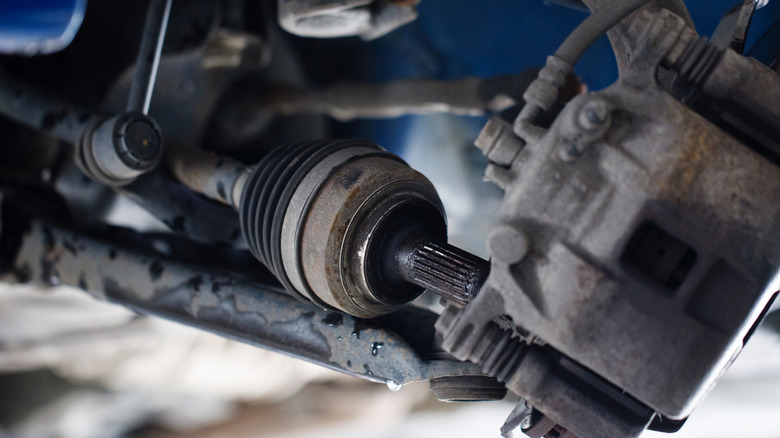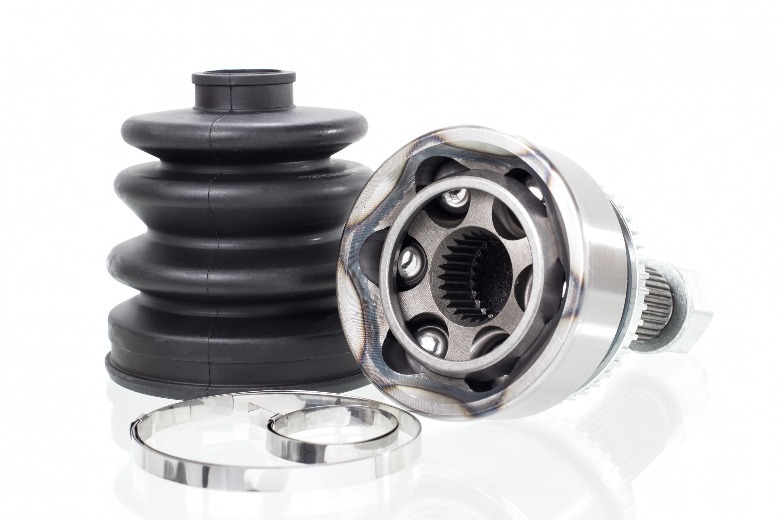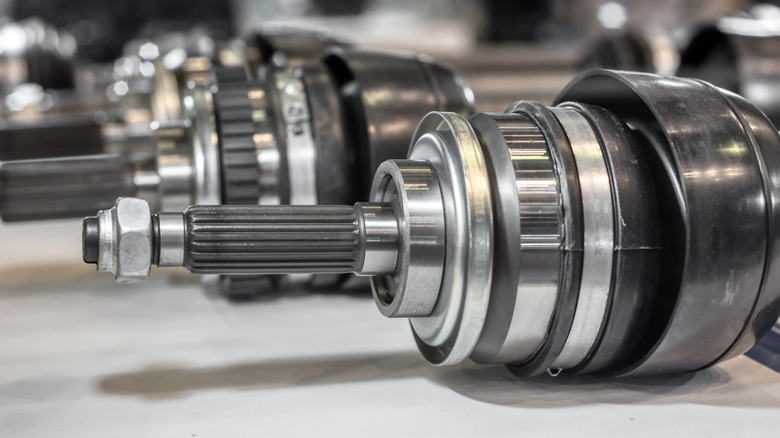What Is A CV Axle? (And How To Tell When They Need Replacing)
The CV axle (or the Constant-Velocity joint) is critical to any vehicle's front driveline. Of course, we all know the engine burns fuel to produce power, and the transmission sends the engine's power to the driveline. But what makes the driving wheels spin are the driveshafts connected to each side of the gearbox, and the CV axles are on each end of the driveshaft.
So when you think about it, the CV axles are just as important as the engine and transmission. Each driveshaft has an inner CV joint (that connects to the gearbox) and an outer CV joint (that attaches to the wheel hub). Vehicles with front-wheel drive use CV joints, but it's not uncommon to find a CV axle in rear-wheel or all-wheel-drive cars and SUVs.
How does a CV axle work?
A CV axle or constant-velocity joint enables the driveshaft to rotate even if the angle between the driveshaft and CV joint changes when steering or going over bumps. It uses a grooved inner shell with ball bearings to guide the outer cover over varying articulation angles. The inside of a CV joint is packed in grease to lessen friction as the bearings guide the inner shell, and there's a rubberized cover (CV joint rubber boots) outside to protect the innards from dust, dirt, and debris.
A broken or warped rubber boot is the first significant telltale sign of a faulty or aging CV axle. Those rubberized boots could turn brittle or crack after thousands of miles, making it easier for foreign articles to enter the inner shell and cause damaging friction.
What are the signs of a broken or failing CV joint?
Without a physical inspection to check the CV boots, the first sign of a broken CV joint is a noticeable clicking sound when turning the steering wheel or moving at speed. In some cases, a failing inner CV joint will crack, rattle, or knock when going over speed bumps (or when the front suspension makes a sudden up-and-down motion).
How much does it cost to replace a CV axle?
Depending on the type of vehicle, replacing a CV axle would cost around $350 to $1,500 in parts and labor. You can save money if you do it yourself, but replacing a CV axle requires knowledge and tools to do it efficiently, so it's best to consult a garage, repair shop, or dealership if you're not into intense DIY repair jobs.
The excellent news is that you don't need to replace the CV axles in pairs. Mechanics would typically recommend changing the CV joints in pairs (especially if you have an older or neglected car). However, replacing only one is generally acceptable if the other CV axle is still in tip-top shape.
Finally, there are things you could do to prevent early deterioration of the CV axles in your car. For example, try avoiding huge bumps, ruts, and humps on the road when driving, and try not to steer or apply the brakes when going through potholes to lessen the impact on the car's suspension and driveline components. Moreover, ensure the CV boots are intact and free of damage. Replacing a pair of rubber boots is much cheaper than an entire CV axle.


